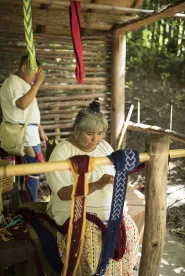On 1 June 2021, the U.S. Supreme Court held in United States v. Cooley that a tribal police officer could temporarily detain and search a non-Indian traveling on a public highway through the Crow Reservation in Montana for potential violations of federal or state law.1 The case marks the first time the Supreme Court has recognized a tribe’s inherent authority to detain and investigate non-Indians for violations of federal or state law to protect the health and welfare of the tribal community. It also comes on the heels of the Supreme Court’s decision on 11 January 2021 declining to review the Ninth Circuit’s ruling in FMC v. Shoshone-Bannock Tribes. In that case, the court held a non-Indian business had to pay a tribally assessed annual permit fee of US$1.5 million to store hazardous wastes from phosphorous plant operations on the Shoshone-Bannock Tribes’ Fort Hall Reservation in Idaho.2 That case also relied in part on the Tribes’ authority to protect the health and welfare of the Shoshone-Bannock community from hazardous substances.
While the Supreme Court previously ruled in Oliphant v. Suquamish Tribe that tribes lack inherent criminal jurisdiction over non-Indians,3 and courts have traditionally been hesitant to uphold tribal civil jurisdiction over non-Indians, a new trend is emerging that suggests federal courts will find tribal jurisdiction over non-Indians where necessary to protect the health and welfare of tribal communities. The Cooley and FMC decisions illustrate when a court might uphold that authority. A tribe’s authority could include temporary detention and investigation of non-Indians for violations of federal and state criminal laws. It could also include the regulation of the use and discharge of pollutants to the environment, among other things.
As business opportunities continue to grow and expand on tribal lands throughout the United States, including the development of renewable energy projects, retail space, and tourism, tribal and nontribal parties should familiarize themselves with the framework of laws applicable to tribal lands and address tribal jurisdiction as necessary in commercial agreements.
THE DETENTION AND INVESTIGATION
In the late hours of a winter night on the Crow Reservation in February 2016, a tribal police officer encountered a truck parked on U.S. Highway 212. As the officer approached the vehicle, he noticed the non-Indian driver, Joshua James Cooley, had bloodshot eyes, two semiautomatic rifles in the front seat, a glass pipe, and a bag of methamphetamine. Concerned for the safety of the tribal community, the officer searched Cooley, seized all contraband in plain sight, and took him to the Crow Police Department. Once there, federal and local officers questioned, arrested, and charged Cooley with drug and gun offenses. He was later indicted by a federal grand jury and, at trial, sought suppression of all evidence seized by the tribal police officer.
THE CROW TRIBE’S INHERENT POWER TO PROTECT THE HEALTH AND WELFARE OF ITS COMMUNITY
The Supreme Court determined that the Crow Nation, through its tribal officer, had the inherent authority to stop and temporarily detain Cooley to investigate violations of federal or state law to protect the health and welfare of the Crow community. Generally, a tribe presumptively lacks authority over non-Indians unless one of two exceptions applies (known as the “Montana exceptions” after the Supreme Court case that originally announced them). First, a tribe may have jurisdiction over non-Indians who have entered into “consensual relationships with the tribe or its members, through commercial dealings, contracts, leases, or other arrangements.”4 Second, a tribe may have jurisdiction over a non-Indian whose conduct “threatens or has some direct effect on the political integrity, the economic security, or the health or welfare of the tribe.”5 A tribe may exercise civil jurisdiction, and after Cooley, to some extent criminal jurisdiction,6 over some non-Indian conduct if one of the Montana exceptions applies.
The Supreme Court found that the facts in Cooley fit the second Montana exception “almost like a glove.”7 It reasoned that to deny tribal officers the ability to temporarily detain and search non-Indians on highways within reservations “would make it difficult for tribes to protect themselves against ongoing threats,” including “non-Indian drunk drivers, transporters of contraband, or other criminal offenders operating on roads within the boundaries of a tribal reservation.”8
MONTANA’S SECOND EXCEPTION REINVIGORATED
Few cases have relied on Montana’s second exception to find tribal jurisdiction over non-Indians. Indeed, Cooley is the first time the Supreme Court has found a tribe has satisfied the exception.9 It is also the first time the Supreme Court has extended that exception to tribal jurisdiction over criminal offenders.10 As courts have routinely stated: Under Montana’s second exception, non-Indian activity “must do more than injure” a tribe,11 it must “imperil the subsistence or welfare” of the tribal community.12 The Ninth Circuit’s decision in FMC and the Supreme Court’s decision in Cooley, only six months after the Supreme Court declined to review the FMC decision, help clarify Montana’s second exception and affirm the doctrine of tribal sovereign authority to protect tribal communities from external threats.
In Cooley, the Supreme Court based its decision entirely on the second Montana exception, finding a “close fit” between it and the circumstances of the case.13 In FMC, the Ninth Circuit relied in part on that exception, noting that substances from phosphorous processing operations “will remain on the Reservation indefinitely and continue to present a threat to Tribal health and welfare.”14 Both cases show that courts are taking a renewed look at the types of situations that could fall within a tribe’s inherent power to protect the health and welfare of its community, and thus, the extent of a tribe’s authority to (1) temporarily detain and investigate non-Indians for conduct that threatens the tribal community and (2) regulate that conduct.
LESSONS FROM COOLEY AND FMC
Even after Cooley and FMC, the full extent of a tribe’s power to protect its community from non-Indian conduct remains to be seen. Taken together, however, Cooley and FMC suggest that tribes may have broad authority to detain and investigate non-Indians, and regulate their conduct, at least in the areas of on-reservation crimes and environmental contamination. It is conceivable, for example, that a tribe might have inherent authority to investigate a non-Indian business operating on reservation lands for violations of the federal (1) Clean Water Act; (2) Comprehensive Environmental Response, Compensation, and Liability Act; and (3) Resource Conservation and Recovery Act—all of which have civil and criminal provisions. A tribe’s inherent authority to protect the tribal community from non-Indian conduct could also include enforcement of tribal laws.
Although it will be important to follow this area of the law as it continues to develop, there are ways to address tribal jurisdiction at the outset of engagements between tribal and nontribal parties. For business entities pursuing economic opportunities with tribes on their reservations, one approach is through negotiated agreements. These offer tribal and nontribal parties alike the opportunity to define the laws that apply to each specific arrangement and a forum for the resolution of disputes. Nontribal entities should also investigate what tribal, federal, and state laws could apply to their on-reservation operations.
Footnotes
1 United States v. Cooley, 593 U.S. ____ (2021).
2 FMC Corp. v. Shoshone-Bannock Tribes, 942 F.3d 916, 920 (9th Cir. 2019), cert. denied, 141 S. Ct. 1046 (2021) (mem.). For more on the lessons of this decision, see Bart J. Freedman et al., Building Relationships with Tribes and Operating on Reservation Lands: Lessons from FMC v. Shoshone, K&L Gates HUB (Jan. 20, 2021), https://www.klgates.com/Building-Relationships-with-Tribes-and-Operating-on-Reservation-Lands-Lessons-From-FMC-v-Shoshone-1-19-2021.
3 Cooley, 593 U.S. at __ (slip op. at 3) (citing Oliphant v. Suquamish Indian Tribe, 435 U.S. 191, 212 (1978)).
4 Montana v. United States, 450 U.S. 544, 565 (1981).
5 Id. at 566.
6 Tribes lack general criminal jurisdiction over non-Indians. Oliphant, 435 U.S. 191.
7 Cooley, 593 U.S. at ____ (slip op. at 2).
8 Id. at ____ (slip op. at 4).
9 See, e.g., Elizabeth Reese, Affirmation of inherent tribal power to police blurs civil and criminal Indian law tests, SCOTUSblog (Jun. 7, 2021, 10:29 PM), https://www.scotusblog.com/2021/06/affirmation-of-inherent-tribal-power-to-police-blurs-civil-and-criminal-indian-law-tests/ (“[T]his is the first time the court has ever found that a tribe satisfied the second Montana exception.”).
10 See, e.g., id. (discussing the Supreme Court’s extension of Montana to more than strictly civil cases).
11 Plains Com. Bank v. Long Fam. Land & Cattle Co., Inc., 554 U.S. 316, 341 (2008).
12 Montana, 450 U.S. at 566.
13 Cooley, 593 U.S. at ____ (slip op. at 8).
14 FMC, 942 F.3d at 935–36, 939.






 />i
/>i

